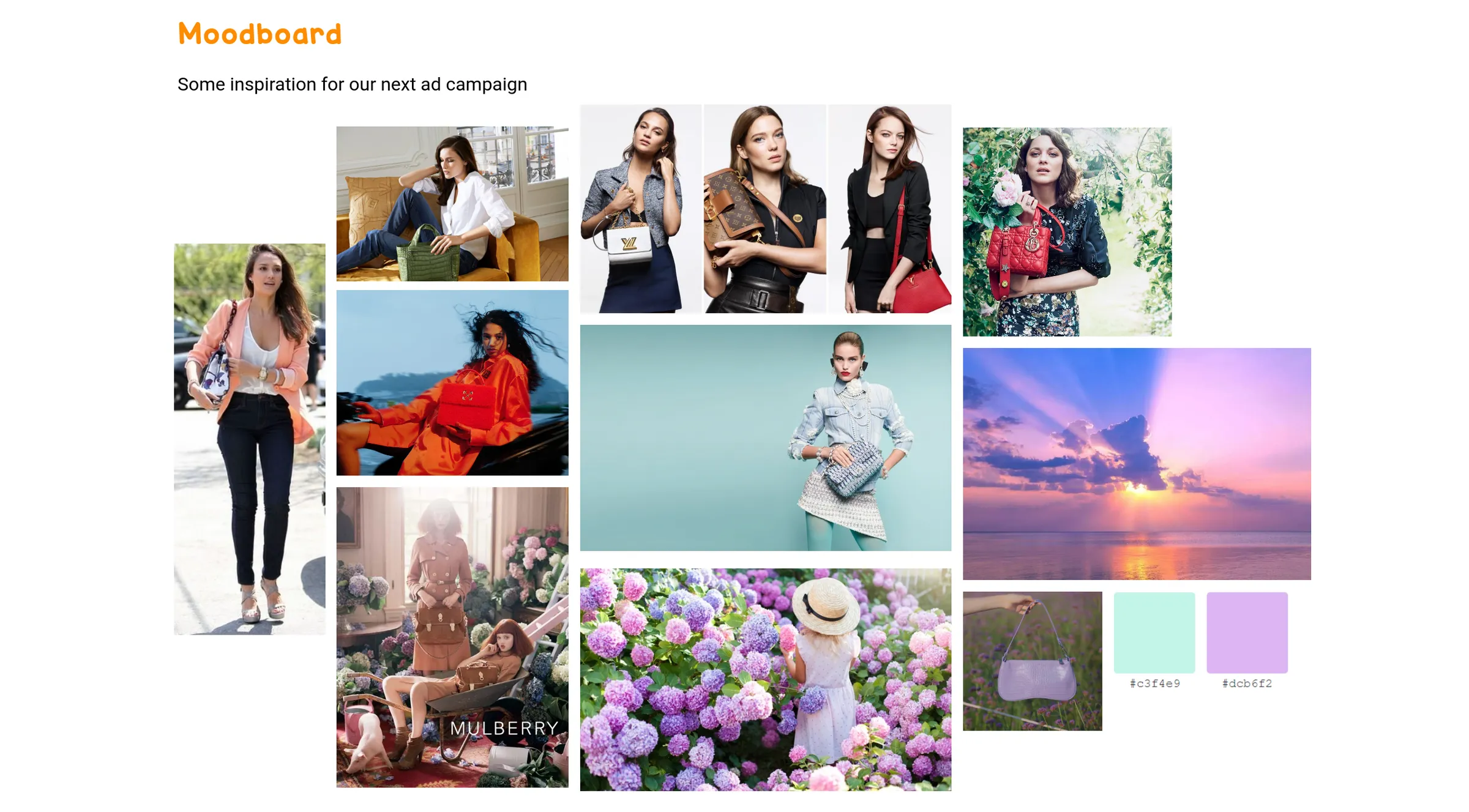Moodboard

What is a Moodboard?
A Moodboard is a board on which designers, graphic designers, and creatives gather images, colors, or textures to inspire creative work or to express their ideas visually. This trendy board is generally used to feed discussions around the style to adopt or as a reference point in a creative project. It helps, for example, illustrate a brand’s graphic universe or the product’s general aesthetics.
The Moodboard is mainly used during the preliminary exploration phase, upstream of the development of wireframes or the prototype of a product. Creators use it in particular for:
- Stimulating the creation process: the Moodboard makes it possible to group inspirational elements and arrange them to bring out new ideas in the context of developing a brand or product.
- Communicating with their employees or customers: it is sometimes challenging for visual designers, such as graphic designers or designers, to express their ideas precisely with words. The Moodboard brings tangible visual elements that allow them to go beyond this constraint by giving life to the sensations and emotions they want to transmit.
- Getting feedback quickly: communicating one or more moodboards to stakeholders upstream of the project allows them to share their input on concrete bases to better orient graphic management and limit the number of iterations after that.
- Solving a particular problem: the creative board can be mobilized at a precise moment in developing a product as a competitive or functional intelligence support, thus fueling reflection around this problem.
How to prepare a Moodboard?
The first step in creating an inspiration board is to determine precisely the needs and expectations around the development product. Five questions must be asked before starting the work:
- What objectives do the product or its characteristics address?
- What problem does the product solve?
- Who are the users of this product?
- When and how will the product be used?
- What impressions will the product produce during its use?
The Moodboard allows designers to provide clear answers to these questions and illustrate the reasons for their choices. To better assess the graphic possibilities, it is often preferable to present several moodboards conveying each of the different aesthetic directions.
Reflecting the inspiration of its creator, the Moodboard is a way of documenting creative monitoring work: websites, advertisements, photographs, magazines, books, and music are helping to create an immersive atmosphere.
The Moodboard must be clear and organized to convey its message better. Design professionals commonly accept four rules of use:
- Giving a title to the Moodboard contributes to directing reading and making a potentially abstract concept more tangible;
- The main images are highlighted, while those with purely illustrative value are set back. To account for his creative vision, the designer subtle uses the position, size, and shape of the images on the board;
- The colors and sometimes the textures are highlighted when necessary;
- Comments or links to web pages can clarify the intentions of the creator of the Moodboard and facilitate communication with other team members or customers.